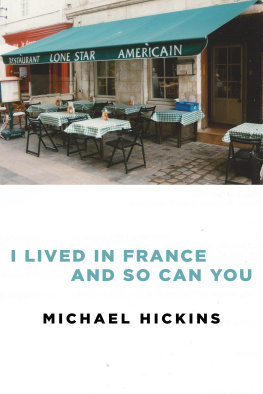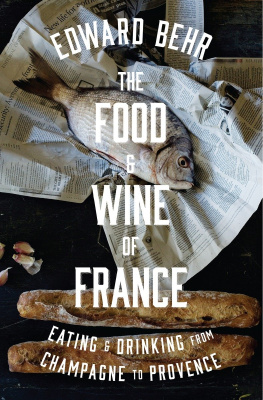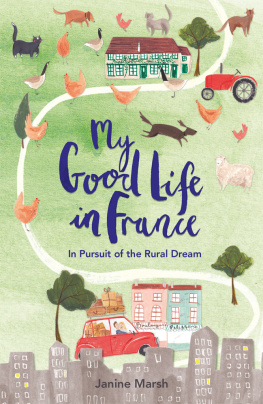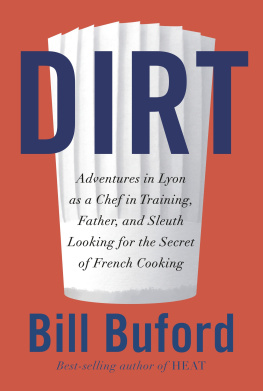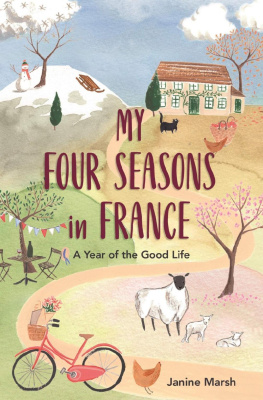Prologue: Paris, 1877
Charles Volkmar, an American painter living in France, boarded a crowded horse-drawn omnibus on the streets of Paris. He climbed to the top deck because he was carrying paintings to enter in the annual Paris Salon, and the top of the double-decker omnibus was the only place theyd fit.
At the next stop, a wild-eyed man in paint-spattered clothes struggled up the narrow stairs of the omnibus, clutching two canvases to his chest. He sat down next to Volkmar and they talked about life, their work, and their hopes of being accepted at the Salon. As they neared the stop for the Salon, the wild-eyed man introduced himself, My name is Paul Czanne.
Several weeks later, they met again in front of the Salon.
Were you accepted? Volkmar asked his new acquaintance.
No, not by these imbeciles, Czanne answered. And you?
Volkmar admitted that hed had two pieces accepted, landscapes painted in Montigny-sur-Loing. I just hope they dont hang them so high up that no one can see them, he said. Ive heard that most American artists are skyed.
Czanne clapped his shoulder and smiled. It was as if the Provenal sun had traveled north to Paris. Thats wonderful, my friend. Im happy for you. Congratulations.
Volkmar thanked him, then asked quickly, But what will you do?
Dont worry about me, Czanne said. A group of us are putting on an alternate show. Just a few friends. Renoir, Monet, Sisley, Degas, Pissarro, and Berthe Morisot. Its at Number Six, rue le Peletier. You should come see it.
I will, I will, Volkmar said, shaking Czannes hand.
Oh, one thing, Czanne added. Dont bring your wife. The idiot critics have been warning pregnant women of the dangers of looking at our degenerate paintings. Its nonsense, of course, but you wouldnt want her to be embarrassed by a policeman trying to prevent her from entering the building.
Volkmar laughed. How did you know about? Oh, thats right, I told you that day we rode the omnibus. Were hoping for a boy.
Congratulations, again, Czanne said. Im happy for you. He turned and walked down the street, striding like a man used to country roads.
They never met again.
8. The Stones of Arles
Arles is a city of stones and history. Roman ruins, ancient churches and cloisters, winding streets, and quai along the Rhne River where the grit that blew into Caesars eyes blows into ours.
The stones tell their own stories. Our hotel was built in the twelfth century but the walls are made of stones recycled from crumbling edifices left by the Romans. When an Arlesian wanted to build something, he didnt go to the lumberyard or brickyard. He just helped himself to the broken columns and blocks of the theatre built in the first century B.C. under Emperor Augustus to hold 10,000 spectators.
I run my fingers over the thick and roughly textured stone. Its hot outside but cool in my room despite the absence of air conditioning. Who needs AC with stone walls a foot thick? The windowsills prove me wrong. They are actually 15-1/2 inches deep. I can see bits and pieces of carvings mortared into the wall.
Rough wooden beams traverse the ceiling in a rhythmic pattern. The windows are small and shielded from the relentless Provenal sun by canvas awnings.
I wish the stones could tell me their story.
Visiting the Museon Arlaten, the folk museum founded by Frdric Mistral, is another way of reading the story of Arles. Mistral, the Nobel Prize-winning poet who founded the movement to save the Provenal language, wanted the objects in the museum to tell a story. It must be a veritable poem for the ordinary people who cannot read, he said.
My father and I wander the thirty rooms, looking at musical instruments and kitchenware, costumes and farm implements. A tall conical ceramic pot is pierced with air holes. Its lid kept in the captured snails, starved for three days before being transformed into Escargots lArlesienne, a dish made with garlic, white wine, a glass of Madeira, and plenty of herbs.
The rooms are dark and cool. Here and there a shuttered window has been opened and a woman in traditional dress sits in the light, sewing or making lace. These are docents in the sense that they are watching over the safety of the artifacts. They dont offer commentary or explanation but their silent presence evokes another century. The spiritual daughters or sisters of Frdric Mistral, they stitch and tat, twirl ivory bobbins, and embroider cloth as women have always done.
On the second floor we gaze at a diorama. The scene is a womans bedroom in 1899, just after the birth of her child. Life-size mannequins are dressed as relatives, friends, and servants. The new mother reclines in a magnificently carved bed, accepting gifts. A wooden cradle awaits the baby now nestled in its mothers arms. A friend brings the traditional basket containing symbolic gifts so that the child will be
Good as bread,
full as an egg,
wise as salt,
straight as a match.
The details in the room: paintings and saints figures on the walls, animal skin rug on the polished floorboards, richly dyed and patterned fabrics, and glazed ceramic warming stoves, all speak of the heritage this family shares.
Another diorama is set in the kitchen on Christmas Eve. A table has been set for a feast while an old man, an old woman, and a dog warm themselves by the fire. Huge copper pots glisten on the walls and mantel and a waist-high earthenware pot holds olive oil.
We are transported into another time, waiting for supper. I recognize familiar objects from Mamans kitchen: a copper warming pan with perforations in the lid, candlesticks, a kitchen scale with its collection of brass weights. Even the chairs look familiar. I have one in my house in California and I love to sit on it because it makes me think of her. The wine and the bread are on the table, awaiting the feast of the Christ Child.
My father and I walk by rows of portraits and more of the quaintly dressed docents, looking like portraits in the streaming light. We wander out into the museums courtyard to be struck by the sight of Roman ruins, broken arches, and columns. One column proudly sports its carved capital; others are reduced to mere plinth and a bit of stone above. This fifteenth-century building not only used old stones from the Romansit is built around what was left of the first-century Roman Forum! Here is history, within the story of history.
Arles is like that. The Espace Van Gogh was an ancient abbey, then a hospital where Vincent was treated for madness. We walk in the garden, beautifully laid out inside the four walls of the cloister. A fountain sprinkles music in the sunlight and the flowers look as if they have been painted. Someone has planted purple iris to echo Vincents paintingsor have the iris always been here? I cant help noticing that some of the flowers want watering and I try to ignore the weeds lurking in the corners of the flower beds. Vincent wouldnt mind. His story was played out for a short time in Arles but didnt end here. Two blooming seasons of the iris were all he spent.
But visitors think of Arles as the location of Van Goghs night caf painting. The caf is still there but the buzz is that the food is awful. After dinner with my father, I meander alone through the winding streets. So far we have found no fewer than five different routes back to the Htel de la Muette. The narrow streets, lined with tall stone buildings, wind their way in curves. Even the main boulevards undulate gently between eighteenth-century buildings and Roman ruins. We havent seen a straight line in three days.
I give myself up to the concept of circling, following a street no bigger than an alley until it curls itself like a seashell into another, impossibly narrower, passage. My sense of direction keeps me pointed towards the Roman Amphitheatre. I come around a corner and just miss being flattened by a car. Motorists in Arles drive as if the winding streets are their own private racetrack. Walkers have to leap out of the way, clinging to a wooden shuttered door or climbing a crumbling stone step into an alcove in the ancient walls.



